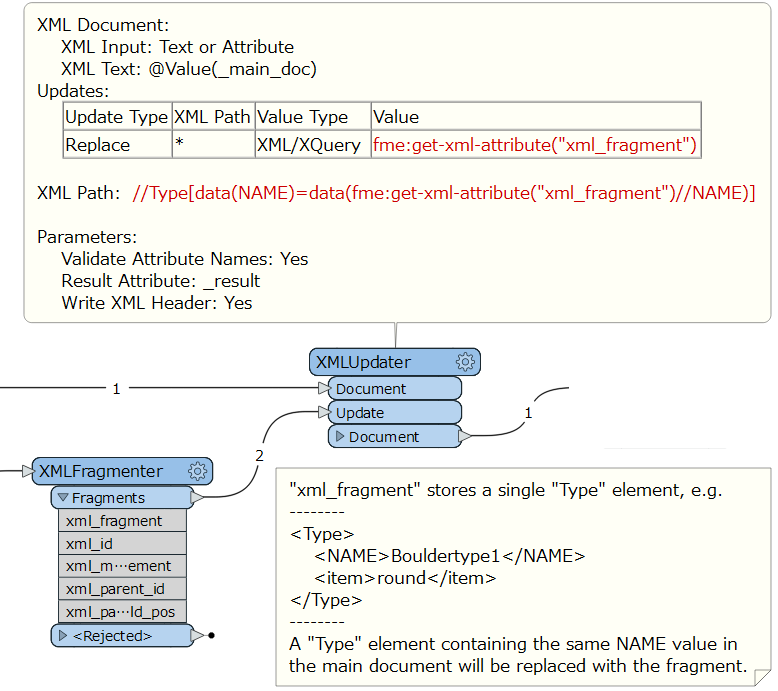Hi community,
I have some problems using the XMLAppender, to define the correct append path in the main xml document.
The main xml document looks something like this:
<DATA>
<NAME>Features</NAME>
<CHILDREN>
<Type>
<NAME>Boulder</NAME>
<CHILDREN>
<Type>
<NAME>Bouldertype1</NAME>
</Type>
<Type>
<NAME>Bouldertype2</NAME>
</Type>
</CHILDREN>
</Type>
<Type>
<NAME>Debris</NAME>
<CHILDREN>
<Type>
<NAME>Debris1</NAME>
</Type>
<Type>
<NAME>Debris2</NAME>
</Type>
</CHILDREN>
</Type>
</CHILDREN>
</DATA> The xml_fragments have an attribute that define if they are to be appended to Boulder/Bouldertype1 or Debris/Debris1 etc.. and the xml_fragment's looks something like:
<Type>
<NAME>Bouldertype1</NAME>
<item>round</item>
</Type>
<Type>
<NAME>Debris2</NAME>
<item>round</item>
</Type>How do i define the correct path to be used?














